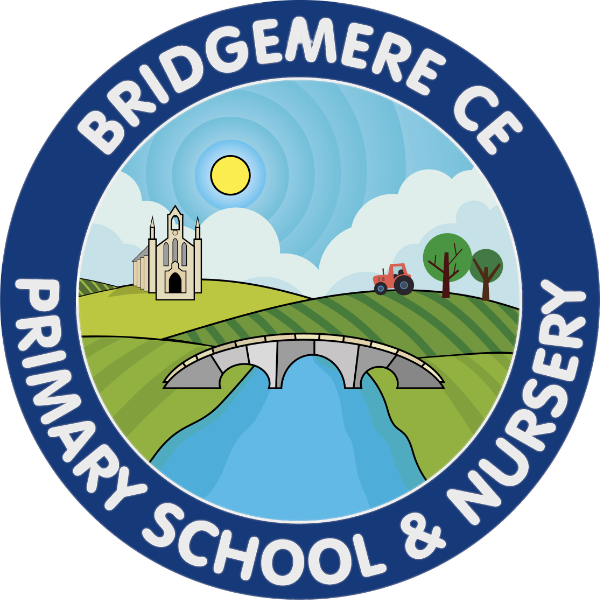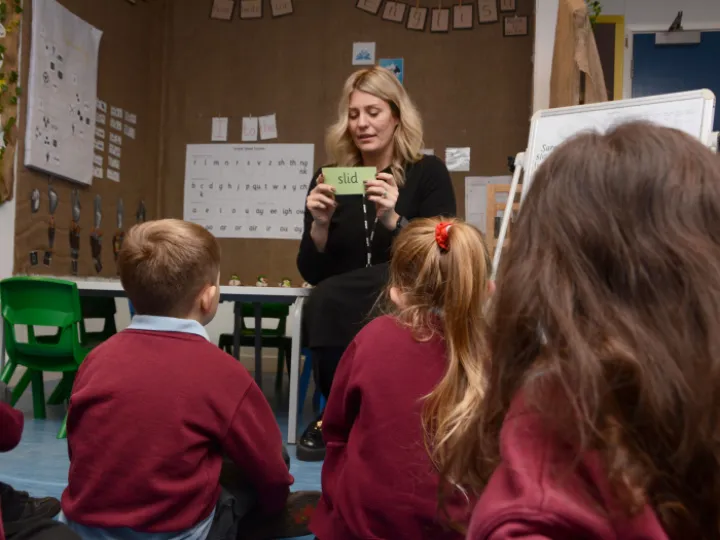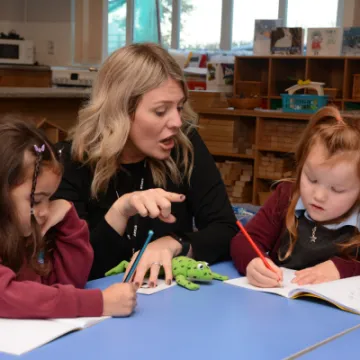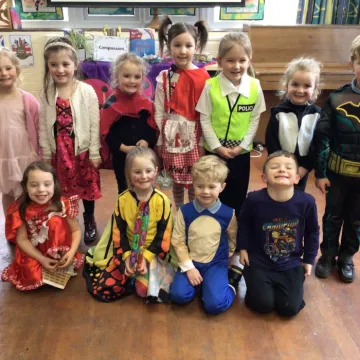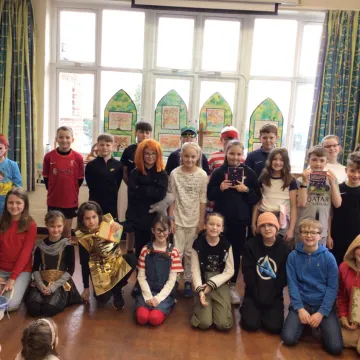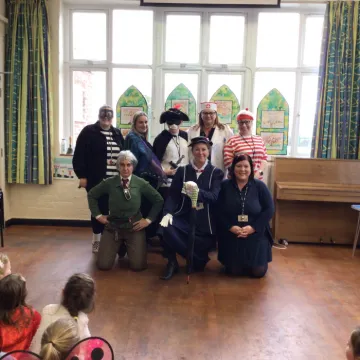Reading and Phonics – Read Write Inc
Reading and Phonics
How we teach reading
[Read Write Inc. Phonics and Reading programme
]
Learning to read is the most important thing your child will learn at our school. Everything else depends on it, so we put as much energy as we possibly can into making sure that every single child learns to read as quickly as possible. We want your child to love reading – and to want to read for themselves. This is why we put our efforts into making sure they develop a love of books as well as simply learning to read.
At Bridgemere CE Primary, we follow the Read Write Inc (RWInc) Phonics/Reading scheme.
Read, Write Inc is a highly successful phonics programme for children aged 4 to 7 who are learning to read and write. It teaches children how to both decode and understand written language to become confident and enthusiastic readers and writers. This is achieved by a dynamic approach to teaching phonics that is consistent across the school using the Read, Write Inc phonics resources and fully decodable reading books.
Children are grouped according to their ability in Early Years and Key Stage 1 to ensure that teaching is matched to their level. Phonics in Early Years and Key Stage 1 takes place on a daily basis. Children in Key Stage 2 that still require phonics teaching, continue with a specially tailored programme (RWInc) to meet their individual needs.
Shared Reading forms part of the daily phonics lessons and is led by the reading teachers. Each child reads for at least 20 minutes every day, in a small group with their reading teacher. All texts are linked to the child's phonic ability. Children enjoy one focus text per week and learning activities support accurate and fluent reading to facilitate comprehension. In addition, children take fully decodable reading books home to further practice skills learnt at school. These books are matched to each child's phonics ability and are closely monitored by the reading teachers to ensure that children are reading books of an appropriate level.
How will my child be taught to read?
Phonic teaching begins as soon as they start in the EYFS, with the Pre-School children learning Set One sounds, playing games using Fred Talk and creating a love of reading by sharing a rich collection of stories, rhymes and songs. Once the children are in Reception they learn Set One and Two Sounds. This means that they learn how to 'read' the (Phonemes) sounds in words and how those sounds can be written down (Graphemes). This is essential for reading, but it also helps children learn to spell well.
We teach the children simple ways of remembering these sounds and letters. Once the children have learnt to blend accurately, they start to read with fluency. This is achieved through speedy reading of individual words and repeated reads of their shared reading books. 'Tricky words' such as 'once' 'said' 'the' are not phonetically decodable and these are taught explicitly as part of the reading session.
During the Phonics lessons, children learn to decode, build accuracy and fluency and develop their comprehension skills.
To develop the children's love of stories, we have dedicated story time, across all Key Stages, daily. The teachers read to the children, introducing them to a variety of stories, poetry and information books – and authors. They acquire new vocabulary through our word aware teaching, which focuses on embedding new words into their autographic memory.
Children who join the school throughout the year are quickly assessed in phonics and grouped according to their ability. Children in Early Years and Key Stage 1 are assessed and regrouped every half term to ensure they receive the correct level of support and challenge. If children are not where we would expect them to be at certain points in the year, they will have daily extra phonics practise, to secure progress. Every child learns to read and becomes a reader!
Good Reading Habits
Throughout the curruciulum, teachers encourage children to develop these reading habits:
To sound/out segment words that they find difficult to say.
Reread phrases, sentences or paragrphs in order to help with understanding.
Infer from the text: consider what a character is like/what they are feeling; develop your own picture of a setting, adding in your own features based on what you have read.
Identify words that are tricky and to try and infer meaning from the text.
Make predictions based on what has been read.
Ask questions based on what you have read and your own interests.
Make links with other texts based on themes/styles
[Develop your own opinion on the text.
]
Read, Write Inc. has 5 underlying principles – the five Ps:
1. PACE – no time is wasted during teaching sessions! Children are active and involved in a fun and creative way. The aim is for the children to complete the programme as quickly as possible.
2. PRAISE – teachers praise the children constantly throughout the teaching sessions. Children learn more quickly when they are praised for what they do well, rather than nagged for what they do wrong. The children are encouraged to praise each other and as a school we have developed several 'Praise Phrases' and 'Praise actions'. Ask your child to demonstrate!
3. PURPOSE – each activity has a very clear purpose. The teacher will set this purpose at the beginning of the lesson so that the children know exactly what they will be learning.
4. PARTICIPATION – all children take part in all parts of the lesson. Full participation is gained through partner work and choral response.
5. PASSION – as a staff we are passionate about our teaching and the benefits of the Read, Write Inc. programme! We love teaching the sessions and this enthusiasm rubs off onto the children.
Reading in Key Stage Two
Once the children have completed the Read Write Inc reading scheme, they move onto the Accelerated Reader system. In order to foster a love of reading and to ensure that children meet a range of text styles, the reading scheme is vast.
Publishers/schemes include: PEARSON, Oxford Reading Tree, Collins Big Cat, PM Benchmark, Project X and a mix of individually levelled books. If you'd like to check whether a book you have at home is on the Accelerated Reader system, use the link below. The "reading expectations" document below also explains which level children should be reading in each year group.
http://www.arbookfind.co.uk/UserType.aspx
Guided Reading in Key Stage Two
The children are taught reading skills through a daily whole class approach using Literacy Shed materials.The children are taught all the skills they need through a variety of fiction and non-fiction texts.
SPAG in Key Stage Two
A progressive curriculum has been developed to teach Spelling, Punctuation and Grammar through Year 3-6.
